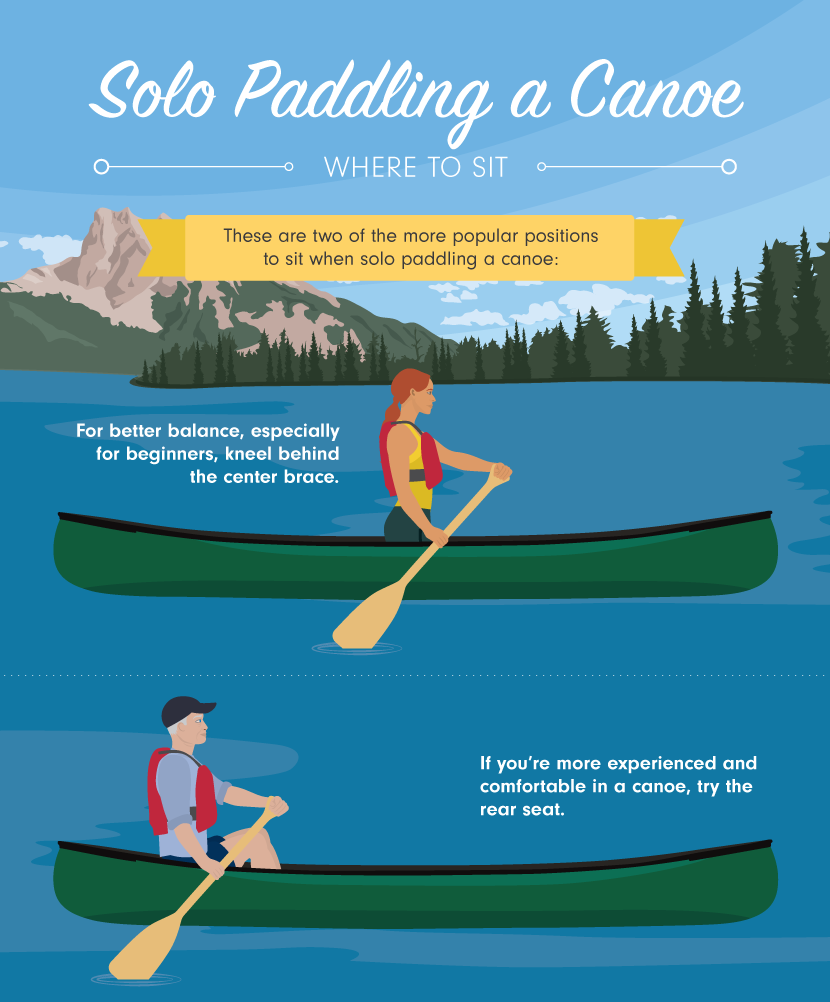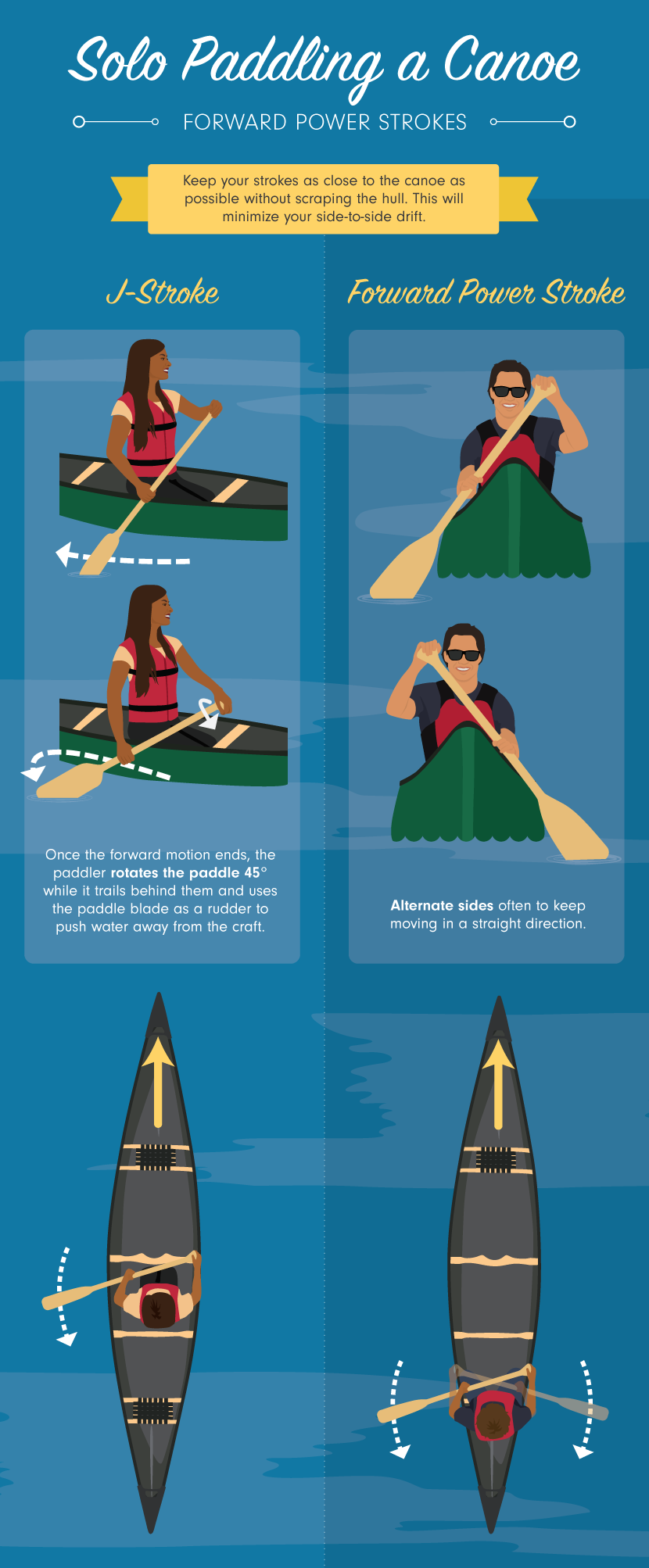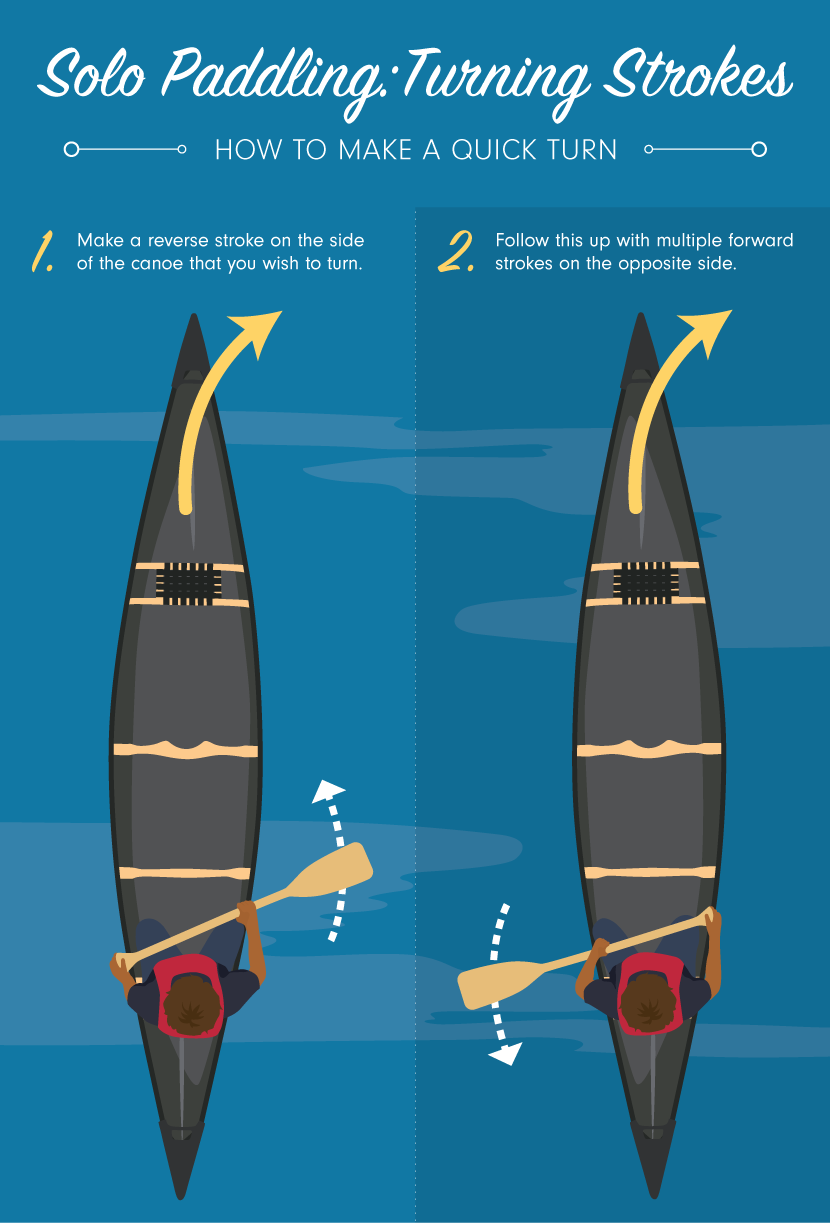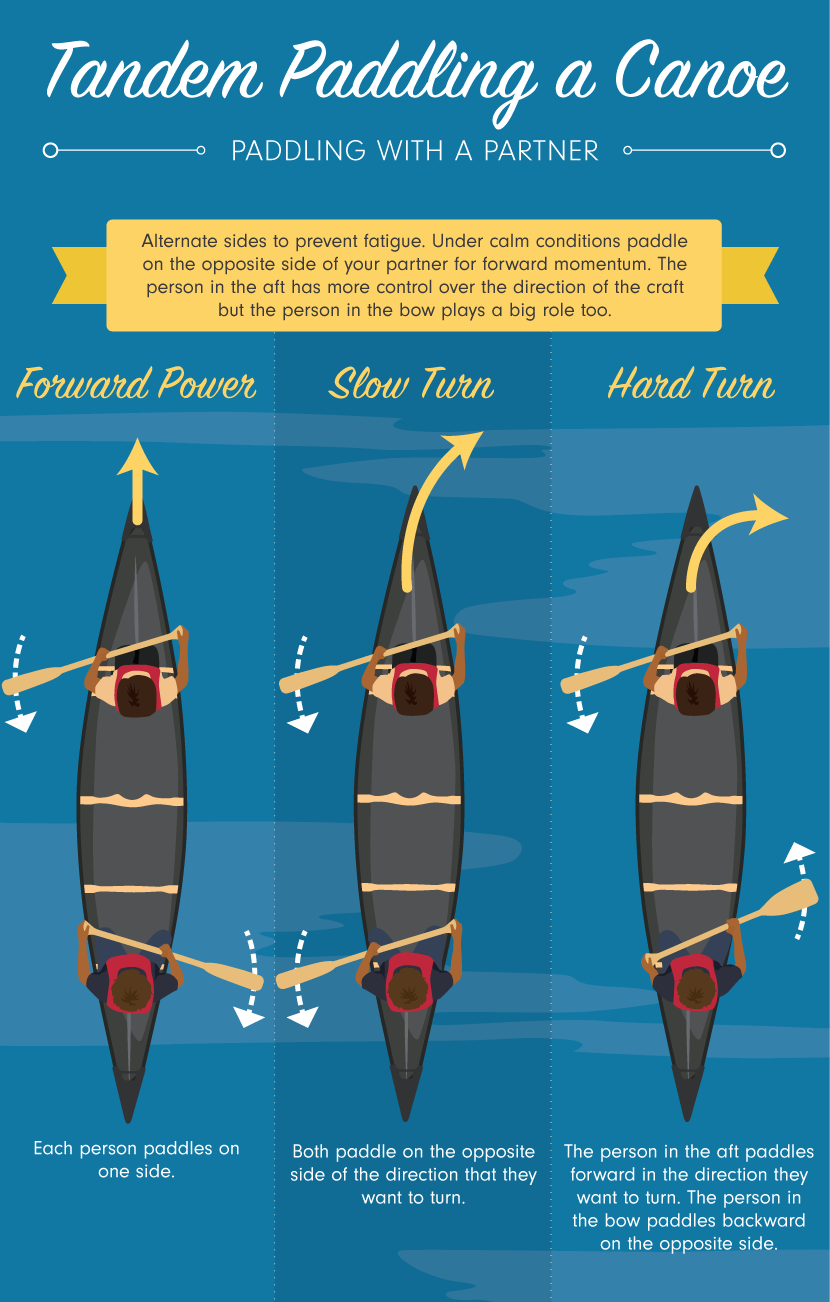Paddling 101:
Basic Strokes and Navigation
Taking a canoe or kayak out is a great way to enjoy the water. In this article we will show you the few basic skills
you need to take the intimidation factor out so you can safely handle a vessel on a small lake or slow stream.
Once you know a few basic strokes and navigation tips, you should be well on your way.
A note before you begin: Always wear a well-sized, buoyant, and government-approved (where applicable)
personal flotation device when practicing these new paddling techniques.
First, here are a few definitions you should know:
- Bow: Front of boat
- Aft/Stern: Rear of boat
- Port Side: Left side as you face the bow
- Starboard Side: Right side as you face the bow
- Tandem Paddling: Two active paddlers

Solo Paddling a Canoe: Where to Sit
You have two options for where to sit. If you’re new to canoeing and are worried about capsizing, then kneeling just behind the center line will give you better balance and is more stable.
It will also keep the bow from sticking far out of the water if it’s windy or your canoe is very light.
The further out of the water your bow is, the harder the canoe is to control. You can also use the aft seat if you feel comfortable and if the bow is semi-level with the aft.

Solo paddling a canoe is very similar to kayaking. A double-bladed kayak paddle can also be used when canoeing solo, and is much easier.
Solo Paddling: Forward Power Stroke
You want to keep your forward strokes as close to the craft as possible without scraping the hull.
This will minimize the distance the canoe drifts to the left or right depending on which side you’re paddling.
Any forward strokes made on the right side will cause the craft to want to move to the left, and vice versa.
To get the canoe started in a forward direction, alternate your power strokes from side to side in the canoe or kayak.
Solo Paddling: J-Stroke
This is a good stroke to know so you don’t have to alternate sides so often while using a single-blade canoe paddle.
The J-stroke starts off just like the forward power stroke, then ends with you rotating the paddle blade 45 degrees while still in the water as it trails behind you to act as a rudder.
Push the water away from the boat. This will help correct your course to keep you moving in a straight line.
Practice this stroke often to help you get a feel for paddling.

Solo Paddling: Quick Turns
For general turns, it helps to think of your paddle as a lever or pry bar. Angle your paddle outward and make the strokes farther out than you would a power stroke.
For gentle turns, you can make multiple strokes forward on the opposite side of the direction you want to turn – any strokes made on the right side will cause the craft to move left.
For a quick turn, make one reverse stroke on the side in the direction you want to turn (so, on the left side to turn left), followed up by forward strokes on the opposite side.

Tandem Paddling:
When you have two people paddling, it’s referred to as tandem paddling. For most people this will happen in a canoe, but there are two-seat tandem kayaks on the market as well.
By nature, the paddler in the aft has more control in turning the craft than the paddler at the bow. However, if both paddlers are on the same page, the person in the back won’t have to work so hard to maneuver the craft.
Forward power strokes: Each paddler should paddle on the opposite side of the other.
Slow Left: Both paddlers paddle on the right side of the boat.
Quick Left: The aft paddler makes a reverse stroke on the left side. The bow paddler makes a forward stroke on the right side.
Slow Right: Both paddlers paddle on the left side of the boat.
Quick Right: The aft paddler makes a reverse stroke on the right side. The bow paddler makes a forward stroke on the left side.
Paddling comes down to using common sense to determine how your paddle will propel the craft.
Luckily, this provides you with a great workout, and there’s nothing like being out on the water.
Use these tips to get started on your canoe or kayak adventure!
Embed the article on your site

